unique privacy screen - green giant or variety?
frankle25
last year
last modified: last year
Featured Answer
Sort by:Oldest
Comments (7)
tsugajunkie z5 SE WI ♱
last yearD M PNW
last yearRelated Discussions
Help with plants for back privacy screen
Comments (14)Thank you both so much for your suggestions! I tried to take some photos to show the light conditions now that the leaves are out. This is in the morning, and there's some sun filtering through, but I can tell you there's almost complete shade from the stone wall at the back to about 15-20 ft. in front of the large maple tree all day. From the picture in the next post, you can see there's shade well into the parking lot as well. However, I'm really glad to hear you both think 10 ft. should be sufficient height. Yardvaark, you make a good point about competition from the small maples. So, I think we'll take those out, and possibly the smaller of the hemlocks as well. Then, put in a mix of evergreen and deciduous shade-tolerant shrubs/small trees that reach 10-12 ft with staggered layers for depth. I'm also somewhat relieved you said 'it's not a formal solution'. That means I should just relax since I can't really make a mistake! Lazygardens, I've wondered what the huge rhododendrons people grow around here were - I guess 'rhododendron maximum' is it! Regarding the fence, it's a good idea. I'm not really a fence person, but if we put in smaller, slower growing plants it's going to take a while to screen with greenery, so the fence may be the best short-term solution. Then we can take our time building up the plantings. Yardvaark, I really like your idea of testing out a few small varieties first to see what does well and then increase from there. Cheaper that way, too! Let me know if you have any additional comments/suggestions based on the new pics. Thanks again for your help!...See MorePlanting Thuja Green Giant Screen
Comments (2)Plant them on at least 6 feet centers. It would be even better, if you desire a faster privacy screen, to plant two staggered rows of them with each being planted on 8 or 10 feet centers, and the staggered rows with holes that are dug at least 6 feet between the front and back rows. Water them well, but if planting in a clay soil which is not elevated or otherwise draining well, monitor them closely to ensure you do not allow their roots to suffocate by sitting in too much water. Also do not let the roots dry out too much. While the trees are getting adjusted, do your best to keep the soil evenly moist, but not soggy. If you want to feed the trees do not use anything more strong than the slow release 4 month lasting, non-burning Osmocote. This fertilizer can even be mixed into the planting backfill soil without burning the roots. In October apply more osmokote by spreading it under the trees and gently scrape small amounts of the top soil and mix in the fertilizer. Also spread cedar mulch under the tree if your soil seems to dry out too quickly. If the trees become stressed and their needles growing on the lower branches begin to yellow, do not cut off those branches; not even if they begin to appear as though they have died. You can remove any dry needles you desire, but do not cut off any entire branches. Just like most arborvitae trees, Green Giants will not regrow any branches, which you cut further back than anywhere the needles have been growing out from. When any branches have appeared to die, take the time to determine if your tree needs less water, more water, or a better watering system. Once you correct the problem and the tree becomes happy again, it will begin to produce green needles again on those once dead appearing branches. Also do not let dogs urinate on any of your Green Giant trees. These trees will begin to die if a medium to large size dog has consistantly been allowed to use them as a place to urinate on at least for several weeks. If your trees are sheltered from the cold winter north and northwest wind, or if they do not receive too much winter direct sun, they might stay green all even all winter. Otherwise they could turn a redish or burnt brown color over the winter months. If this happens do not be alarmed, because once Spring temps warm and rains arrive they should green back up nicely. I have noticed that Green Giants which stay green year round seem to gain more growth height throughout the year. Green Giants which struggle by being planted in poorly draining situations, and or which turn red in the winter seem to grow much more slowly. If these manage to survive they will spread and grow thicker trunks and their top growth will be so slow that the trees stay fairly nicely filled out from top to bottom. The fast growing trees often begin to send up a growth shoot which appears much more sparce than the bottom parts of the tree. When this happens, if you give the tree a feeding of osmocote the trees will, over a short time, begin to fill out the top growth to be more in balance with the thickness of the lower, older developed part of the tree. Do not cut off any of the thin looking shoots that burst forth at the top of your trees. Each thin shoot which begins to grow out of the top of your trees is needed for the trees to grow taller....See MoreLeyland vs. Green Giant vs. White Pine need screening advice
Comments (29)Yes I have been short of time lately, but after I just saw your latest questions, I took only a moment to walk over to my row of trees and check thier measurements. The fence behind my trees appears 10 times worse that the one in your photo. My trees are planted on about 9 foot centers and I only did one row of them. The bottom four feet height on then averages spreads across their widths of at average is 5 feet all the way around them. For the distance from the two intercecting fences inside corner to the end of the bad fence my trees are distacting the view from is about 50 feet long. I have 7 GGs planted along this length. the GG's trunk nearest to the inside corner of the intercecting fences has a trunk only 4 feet away from the corner. the 6 other GGS have an 8 feet distance I can measure from trunk to trunk, But the planting holes when first dug were centered at almost 9 feet distances. The lower 4 feet of the trees are the most full and there is still an average of a 2 foot gap between each of the trees that needs to fill in before the trees will make a solid screen along that height of the 6 foot tall fence. Since I stoped giving my trees osmokote even before last year the rest of the trees growth is not as thick or wide, so there is even more view of the top two feet of the ugly fence. This is the reason why I suggested it is best for you to plant two staggered rows. That way you will have a better full screen more quickly than my trees. the neighbor's two story house is no more than 4 feet on the otherside of the ugly fence. The tops of my trees have grown about a foot higher than the bottom of their second story windows. I measured a 4 foot distance from the fence slats to the trunks of my trees, and I could still easily, with out much tree branch displacement, walk behind my trees and the fence when I came up with the 50 foot measurement for the lengh of fence that the lower 4 feet of this line of trees currently cover. One other note is that I planted only 18 inch tall trees to start. They are fairly well protected from the prevailing north/south winds because the 2 story house is directly south of them and there is a large scarlet oak tree directly north of the first 3 from that inside corner I discussed above. I live on a corner lot and my house faces west, but the fence in question is along along the east facing back yard/south side yard, and it stretchs westward to about half the depth of our south facing side yard. So my GGs get plenty of afternoon sun, especially in the summer and before they grew so tall got a lot of morning shade. I only went to all this description to illustrate how protected they are from drying winds. This is so effective for then that my trees have never taken on a bronzy cast that many people report their GGS do in the winter. My trees are also planted on a slight rise where the builders of the two story house so close south of my trees never did a good job cleaning out the builders sand they uses when installing a narrow sidewalk between that house and the privacy fence. The growth I reported with my trees has all been affected by theses issues I have just discussed. GGs which struggle will slow draining soil that stays wet longer will grow only half as fast as mine have until they get well established, which could take up to 4 years. Some of them might even die during sudden dry periods and have to be replaced. Also trees planted at 6 feet tall might take a full 2 years before you see much top growth out out them. That is because they will be using this time to develop a better root system which can support the 5 foot yearly growth these trees do while they are young and once they are established. The trade off you get with this is while they are waiting to develop a larger root system and not growing much in height, they will be doing a better job than mine did concerning the thickening of their trunks and also thickening the density and spread of their branches. My trees did not have to that root size catch up so they started showing nice top growth in the first year they were planted. It took them all this time though to develop an exceptionally good density and branch spread over the lower 4 feet of them. If I had kept spreading Osmokote under them and watering them regularly in dry periods after they got well established, them that exceptionally nice thickness and spread portion of them today might have reached at least 8 feet high. As it is they have a fairly nice appearance from top to bottom, but do not have the type of screening affect that you would want to handle well the issues you have described in your back yard view. Hope that with all this description, it will help you to understand better why I suggested a double staggered row with the front row beeing the Steeplechase trees. If cost is an issue, you might plant 6 foot tall GGS on the back row and either purchase locally or order in if they cannot be found locally the steeplechase sport cultivars of the GGS. If ordered in those Steeplechase cultivar trees would probably on be available no larger than 3 gallon size and will look fairly thin when you get them, but if you provide them good drainage, water them correctly, and feed them with osmokote each spring and fall growing season then it will suprise you a how quickly they catch up in size the the larger GGS you planted in the back row....See MoreGreen Giant or some other ever green ?
Comments (10)OK .... i have green giants... that i started from 6 inch peat plugs in 2001, or so .... and abused them greatly .. lol ... they are about 15 feet tall ... and about 5 to 8 feet wide.. and are just getting rolling .. no tree/conifer ... is going to magically stop growing ... on my 5 acres.. they are going to be just great ... especially when they are 30 feet tall by 10 feet wide ... or 15 ... i was thinking your yard was a bit smaller .... but i cant see it .. so you are going to have to decide... if they are of proper proportion to your yard .... are you willing to give up 10 or 15 feet .. back where you want to plant them???? white pine .... ALWAYS ends up shedding lower branches... as it get 30.. 40.. 50.. 60 .. 120 .. feet tall ... you can leave them .. but they can get really ugly ... and then you are left with big stinkin trees... but not the privacy you wanted .... are you willing to give up this much space???? please.. consider this .... YOU DO NOT HAVE TO PLANT ALL OF ONE THING .... do two pines... do a few GGiants .. and a few spruce.. etc ... diversity rules .... and if somewhere down the line.. some dont please you ... or get too ugly .. you remove just those... but still have the privacy you want... and keep in mind ... trees planted... half way out to the property line... can be correspondingly smaller.. to offer teh privacy you want .... no one says.. privacy barriers have to be lined out at the fence .... a picture would sure help .. good luck ken...See Moregardengal48 (PNW Z8/9)
last yearToronado3800 Zone 6 St Louis
last yearWendyB 5A/MA
last year
Related Stories
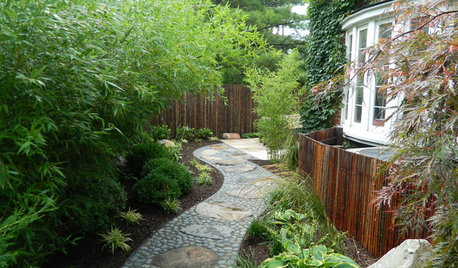
GARDENING AND LANDSCAPINGGrow a Lush Privacy Screen
No need to wait forever for patio privacy the green way. These 10 ideas will get your screening up and running in no time
Full Story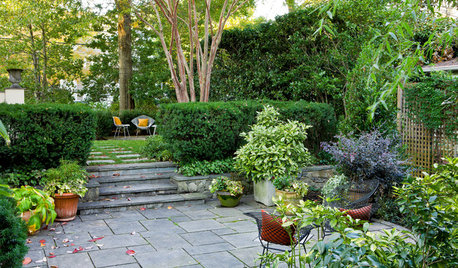
PLANTING IDEAS9 Inspiring Gardens Gain Privacy and Screening With Plants
Boost your privacy outdoors and screen adjacent buildings with planting ideas from these diverse gardens
Full Story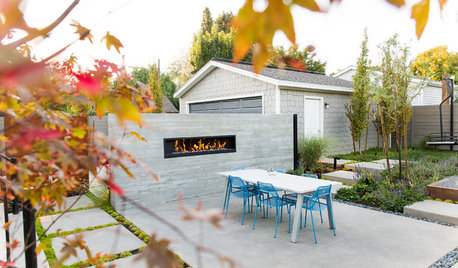
LANDSCAPE DESIGN4 Yards Gain Pretty Views With Creative Privacy Screens
See backyards and side yards that avoid unattractive views with effective fences, walls and plantings
Full Story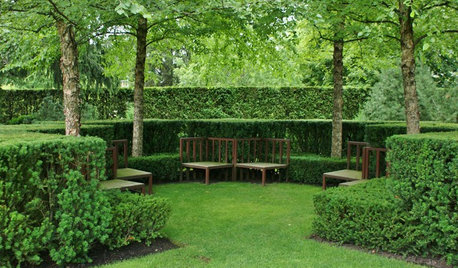
GARDENING GUIDESGrow Your Own Privacy: How to Screen With Plants and Trees
Use living walls to lower your home and garden's exposure while boosting natural beauty in your landscape
Full Story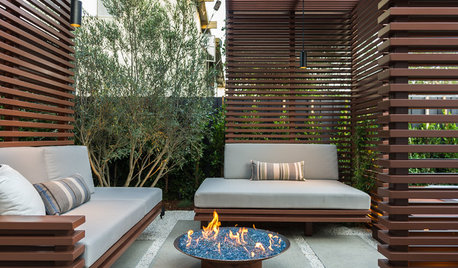
LANDSCAPE DESIGNThese Ideas for Outdoor Screens Prove Privacy Can Be Beautiful
Translucent panels, slatted wood, laser-cut metal and plantings offer just the right mix of seclusion and views
Full Story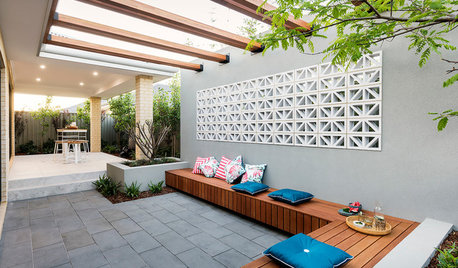
ARCHITECTUREConsider Screen Block for Beauty, Privacy and Airflow
This throwback element of midcentury design can be used in myriad ways on exteriors, as well as indoors
Full Story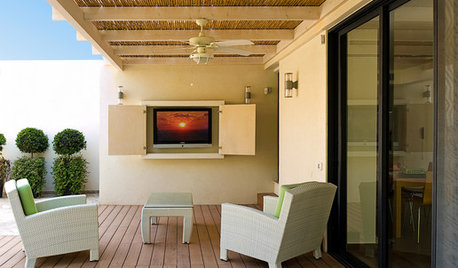
GARDENING AND LANDSCAPINGBamboo Screens Make Your Garden Glow
Natural, Renewable Material Brings Filtered Light and Privacy to Outdoor Rooms
Full Story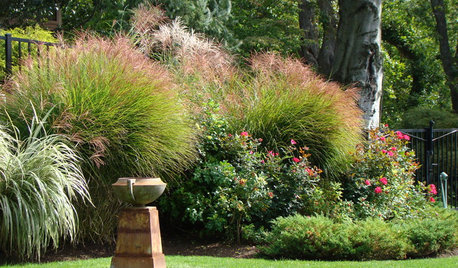
LANDSCAPE DESIGNThe 7 Best Plant Types for Creating Privacy and How to Use Them
Follow these tips for using different kinds of plants as living privacy screens
Full Story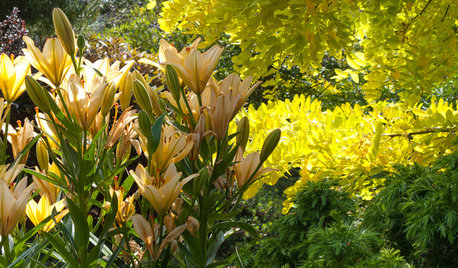
GARDENING GUIDESGreat Garden Combo: 3 Wonderful Plants for a Deer-Resistant Screen
Protect your privacy and keep deer at bay with a planting trio that turns a problem garden area into a highlight
Full Story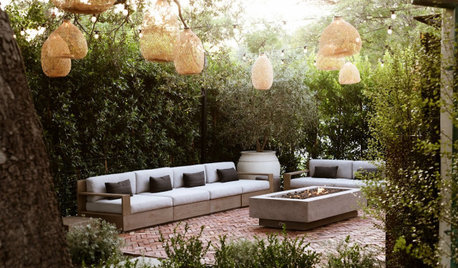
LANDSCAPE DESIGNHow to Create Privacy in Your Yard With Plants and Structures
Whether you have neighbors above, live on a busy street or want to reduce noise, explore these screening solutions
Full Story


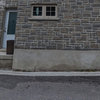



laceyvail 6A, WV